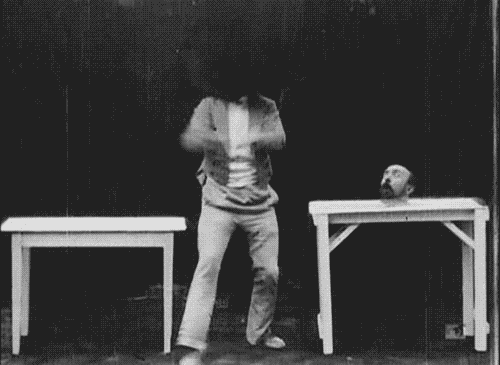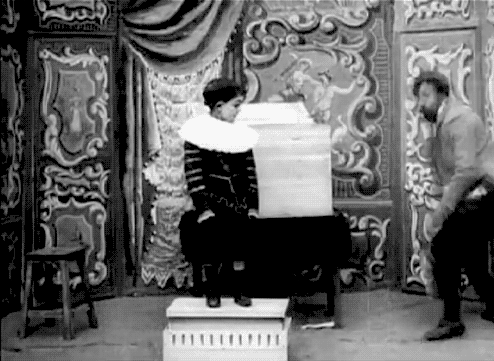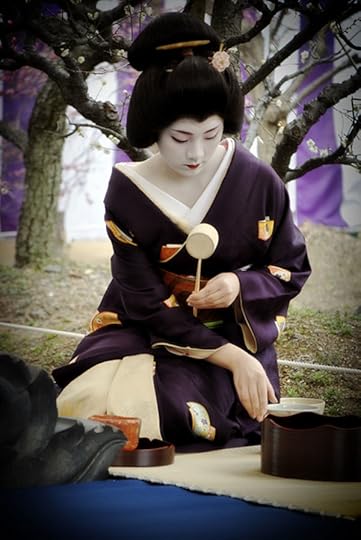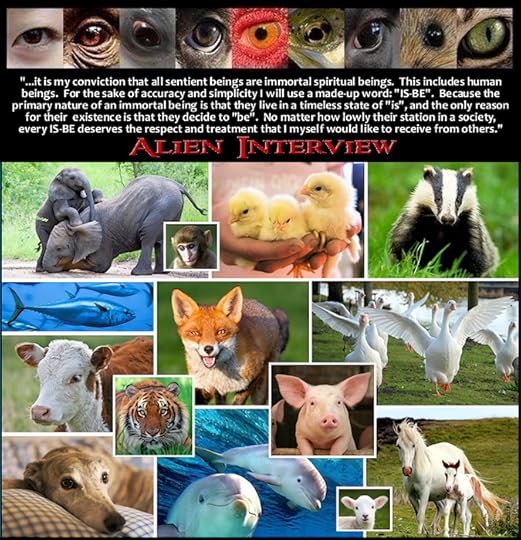Lawrence R. Spencer's Blog, page 61
September 22, 2023
MESSING WITH HEADS
September 21, 2023
STATES OF SUPERSTITION
Republished by Blog Post Promoter
The idea that human beings in biological bodies can travel throughout intergalactic space, raise families on board a space craft, and freely interact with alien life forms is an example of superstition, based in science fiction, conjecture and wishful thinking….
LET’S TRY TO FORGET ABOUT THE HISTORY OF HUMAN SUPERSTITION AND STUPIDITY
AND PRETEND THAT WE HAVE EVOLVED INTO HIGHER STATES OF SUPERSTITION.
September 20, 2023
PSYCHOSIS REDEFINED
Republished by Blog Post Promoter
 The original definition of the word “psychosis” came from the Greek word, psykhe– “soul”, i.e. psyche + -osis. Greek psykhosis meant “a giving of life; animation; principle of life.” Definition of “-osis” in English: Denoting a process or condition.
The original definition of the word “psychosis” came from the Greek word, psykhe– “soul”, i.e. psyche + -osis. Greek psykhosis meant “a giving of life; animation; principle of life.” Definition of “-osis” in English: Denoting a process or condition.
The word “psychosis” in Earth “science” was invented in 1841 by German physician Karl Friedrich Canstatt (July 11, 1807,—1850) in his work Handbuch der Medizinischen Klinik. He used it as a shorthand for ‘psychic neurosis’. At that time neurosis meant any disease of the nervous system, and Canstatt was thus referring to what was considered a psychological manifestation of brain disease. (i.e. “brain” = “spirit or soul”.) Earth science cannot perceive a psyche, soul or spirit. So, all manifestations of the “psyche” are incorrectly attributed to “the brain”, which is a physical universe object.
A “psyche”, soul/spirit, is defined as an “Is-Be”, or Immortal Spiritual Being, in the book Alien Interview. It is not a brain. An Is-Be is an eternal source of creative thought, animation, energy, and perception in the physical universe (and others) including all sentient life-forms. An Is-Be exists whether it is inhabiting a biological body or not. Collectively, all Is-Bes creating and perceiving interactively may be the source and cause of entire universes.
 The human Earth population are spiritual prisoners on Earth. Earth is a “prison planet” of the Old Empire government of this region of space, and beyond. The most common types of “psychosis” manifested by Is-Bes on prison planet Earth, are described in the book Alien Interview.
The human Earth population are spiritual prisoners on Earth. Earth is a “prison planet” of the Old Empire government of this region of space, and beyond. The most common types of “psychosis” manifested by Is-Bes on prison planet Earth, are described in the book Alien Interview.
As a personal study exercise, I have taken the liberty of creating my own definitions, and abbreviated names, for various types of Is-Be “psychosis” on Earth, based on descriptions of “untouchables” from the Alien Interview book, as follows:
“PP-Be” = Generic Prison Planet Is-Be, i.e. any Is-Be inhabiting a biological body on Earth, or disembodied Is-Be controlled by the amnesia / hypnosis machinery of the prison planet.
“Crim-Be” = Criminal Is-Bes such as common murderers and thieves, congressmen, military contractors, corporation CEOs, pharmaceutical companies, con-artists, etc..
“Perv-Be” = Sexually Perverted Is-Be such as rapists, child molesters, sex-slave traders, patriarchal priests, secret cult members, various politicians, sexual predators, sex drug pushers, or those who use sex as a weapon of control or to inflict pain.
“War-Be” = Military/industrial/Political/Banker Warmonger or Soldier Is-Be.
“Bank-Be” = Bankster Is-Be such as any banker, stock trader, land speculators, fiat money creators, etc. who create an alleged “valuable means of exchange” which is not supported by actual goods, services, food, survival necessities, etc., required for life of biological bodies and the maintenance of the planetary environment.
“Para-Be” = Parasitic Is-Be who cannot produce anything but can only bleed the labor, inventions or work from other Is-Bes using aesthetic lies, trickery, deception, false promises, treachery enforced on the “host” by legal and military force. Example: attorneys, priests of religion or science, politicians, bankers, gamblers, drug sellers, etc..
“Sci-Be” = Priests and/or practitioners of Western “science” or “medicine” on Earth.
“Art-Be” = Any of the numerous Artist / Performer Is-Bes such as painters, dancers, singers, writers, musicians, etc., whom the Old Empire deemed to be “untouchable” or useless to their totalitarian society.
“Worker-Be” = Slave Is-Bes who do manual labor in mines, on farms, in factories, etc., to feed the bodies and create wealth for the Para-Bes, Bank-Bes, etc..
“Psycho-Be” = chronically destructive, anti-social beings who cannot be corrected, changed or repaired.
“Rev-Be” = Is-Bes who are revolutionaries or political/military enemies of the Old Empire
“DEF-Be” = Is-Bes who are members of the Domain Expeditionary Force who have been captured on or near Earth, given amnesia and placed in biological bodies as part of the prison population of Earth.
“Smart-Be” = Is-Bes who are brilliant inventors, managers, thinkers, creators, etc.
“Dumb-Be” = Is-Bes who have sunken below the level of sentient awareness.
September 19, 2023
VERMEER — AN EMPATHETIC EXPLORATION
Republished by Blog Post Promoter
Paintings of Johannes Vermeer exhort a mystic awe in the human soul. Aesthetics, women and mystery are each a glue that have baited many of the most powerful traps in history. Vermeer combines all three. Almost nothing factual is known about the painter personally, or the bevy of enchanting women he painted.
Compounding the mystery is the puzzle of identifying the people he painted so repetitively. Apparently, they were nearly all his wife or daughters! Moreover, they were portrayed at various ages in their lives, over a span of twenty-two years during which he and his wife produced an family of 15 children, 11 of whom survived! As a consequence of their common genetic similarities in their physical appearance, they also shared clothing, hair styles, and jewelry. Add to this monochromatic puzzle are identical rooms, windows, lighting, furniture, fixtures and the themes surrounding them. The resulting maelstrom of similarities make differentiating one person from another a near impossibility.
Most of his work, apart from the paintings produced during his six year apprenticeship at the Guild of St. Luke, were portraits of his wife, family and a few close friends. Vermeer never painted his family members, or his self-portrait, with the intention of selling them, any more than you and I would think of selling photographs or home videos of the members of our own family.
He painted people in his surroundings that were close at hand, familiar, and endeared to him. Mostly he painted for the love of aesthetics, and to innovate the technology of painting — to discover new techniques to more exactly render the myriad subtleties of light, and to endow love, and life on canvas, with colors and brushes. Like many artists before and after Vermeer, these challenges intrigued and consumed his interest, intellect and spiritual passion.
Apparently, during his own life, it never occurred to him that anyone would be interested in paying money for many of his paintings. Most of his paintings were still in the possession of his wife when he died prematurely at the age of forty-three! Astoundingly, they were never sold, even though he and his family were literally starving from the want of money to buy food!
According to the research of Vermeer scholar, Anthony Bailey, the value of Dutch money was as follows: “…a Dutch cloth-worker in 1642 got eighteen stuivers a day; there were twenty stuivers to one guilder, and a 6-pound loaf of rye bread coast about four and a half stuivers…”.
Imagine his shock and dismay to discover, 300 years later, that his paintings are worth many millions of dollars! Yet, during his own lifetime, he never earned enough from them to feed his family, and indeed, died from an overwhelming bought of depression because of it.
These facts confound comprehensive and compound the mystery of Vermeer.
In this book, I propose to travel this impossible labyrinth, to discover the long-hidden key to ancient riddles: Who were the people painted by Vermeer? Who was Vermeer, the artist and the man?
As though this were not daunting enough, I propose to do this, in part, by leaping the abyss of 300 years from the present year of 2008, returning through my own experience as an artist, a father, a husband and a man, through my own, personal life experiences, to re-experience the life of Vermeer, as though it were my own!
I do not claim that I am or was Vermeer. Such an assertion would be entirely subjective, impossible to prove, and irrelevant. As do myriad other people fascinated by his art and his life, I have a good deal of personal empathy and common life experiences that I share with this obscure man, as a father, as a parent, as an artist and as a spiritual being. I intend to employ this empathy as a tool of investigation and discovery: just as one might use a divining rod to seek out water in the desert.
As a lost dog uses native intuition to find it’s way home, I am searching for a lost self. As a tourist in Italy feels a sense of deja vu when visiting the Coliseum in Rome: one can almost smell the roar of blood spattering on the sand, and reel at the lust for pain and death oozing from the crowd! And thrill as a blade slashes and vomits entrails to the ground. The spirit writhing to be free of a mangled corpse crumpled in the dust.
I yearn to recover a lost identity. Vermeer.
Does the intervening distance of time make a difference in this investigation? Let me propose that time is only an arbitrary measurement of the movement of objects through space that has no effect or relevance here.
Has time changed the emotions of love, lust or hatred in ten thousand years?
When struck in the heart by a spear, does a great-great grandson not bleed just as profusely now as when his ancestor was struck down on a ancient battlefield?
Were the tears shed and anguish suffered over the dead child of our mother’s, mother’s, mother any less real than our own in the eternal now?
If I experience what another man has experienced, am I not, to that degree, that man myself? If I am willing to invade, permeate and be that experience, and to assume responsibility for it, is it not my own?
My experiment is to be Vermeer. That is, to return to his life and time to experience his existence from the perspective of subjective emotional, artistic, and spiritual experience in present time. To this degree, I am Vermeer.
To the degree that you re-experience his life with me, you are Vermeer. In truth, Any Man who is willing to be Vermeer, is, to that degree, Every Man.
— Excerpted from the book, “Vermeer: Portraits of A Lifetime”, by Lawrence R. Spencer
September 18, 2023
BMX – worlds first triple backflip
Republished by Blog Post Promoter
Video: BMX rider performs worlds first triple backflip – Telegraph.
9 Principles of Japanese Aesthetics
Republished by Blog Post Promoter
As a painter and writer I was delighted by this wonderful article about the aesthetics of the Japanese. In my opinion, no culture on Earth has a more highly refined sense of aesthetic. The principles of Japanese art described in this article are eloquently illustrated!
September 17, 2023
RESPECT
Republished by Blog Post Promoter
RESPECT: (noun) 1. a feeling of deep admiration for someone or something elicited by their abilities, qualities or achievements.September 16, 2023
A LOVE POEM
Republished by Blog Post Promoter
MY ETERNAL COMPANION, WITHOUT END,
BEFORE THE BEGINNING, MY IMMORTAL FRIEND….
WE’RE ALWAYS TOGETHER THOUGH WE’RE APART.
I KNOW YOU’RE HERE…. WHO YOU REALLY ARE!
MY MOST ADORED, MY BLESSED FRIEND!
ON EARTH WE’RE LOST…. ABANDONED, AND….
FAR FROM THE HOME WHERE WE BEGAN.
I CAN’T REMEMBER WHO I’VE BEEN!
WHEN WAS THE START? DID I KNOW YOU THEN?
YET, WITHIN THE TIMELESS ‘WHO’ I AM
I KNOW THAT YOU ARE MY ETERNAL FRIEND!
YOU ARE THE ‘WHO’ THAT I ADORE!
YOU WILL ALWAYS BE! FOREVER MORE!
WHEN THE ‘ETERNAL GAME’ IS AT AN END,
YOU WILL REMAIN MY IMMORTAL FRIEND!”
Lawrence R. Spencer. 2013.
September 15, 2023
A FORM OF MEDITATION
Republished by Blog Post Promoter
Last year I read many books about Eastern philosophies and spiritual practices, including the Autobiography of a Yogi, written by the great spiritual teacher from India, Paramahansa Yogananda. I do not practice Yoga, or meditation, per se, nor do I ascribe to any organized spiritual methods or organizations. I am following my own path of reading, communicating and seeking to remember Who I Really Am as an immortal spiritual entity. I suppose I could call my form of meditation: “looking, communicating, understanding and loving”. I practice my “meditation” continually, at least to the degree that I am willing to discipline myself to attain awareness and ability above the extremely limited perceptions imposed by animating an aging biological body on Earth.
I do not “believe in god” or have a membership card in a group of followers. However, I am inspired and emboldened by beings who know themselves as the source of life energy, of love, wisdom, and of creation of realities for themselves and of universes. As part of my continuing journey I am reading a book and Blog by a fellow traveler, Pam Grout. Here is a compilation video she recommended about Russell Brand. His enthusiastic advocacy of wisdom, and egalitarian love, through self-realization reminds me very much of Yogananda. This video recommended by Pam Grout in her Blog ( http://pamgrout.com/ )












